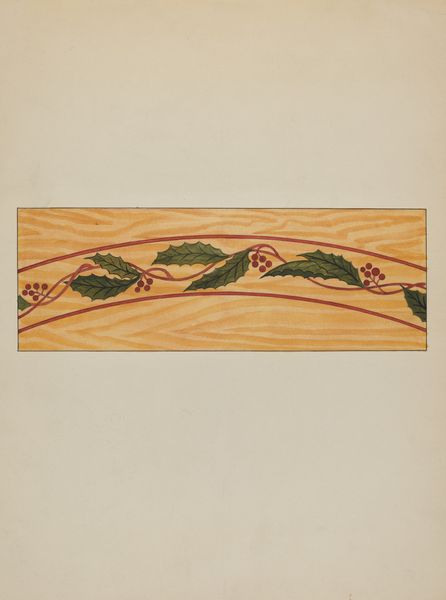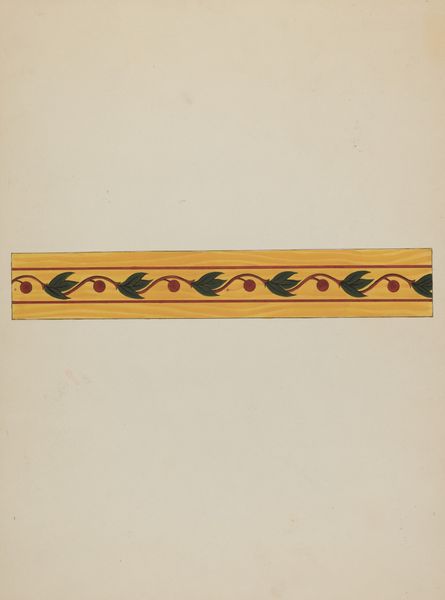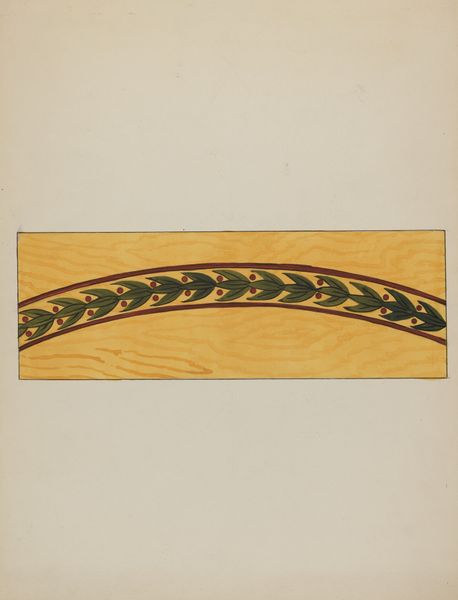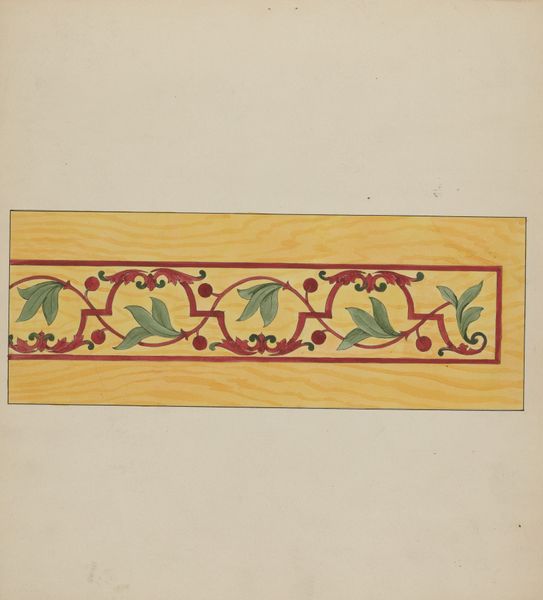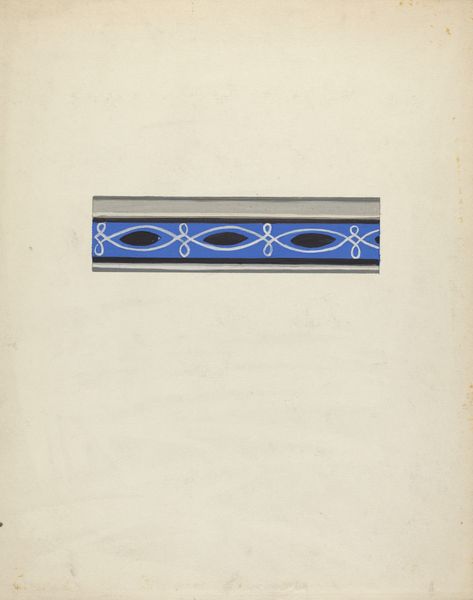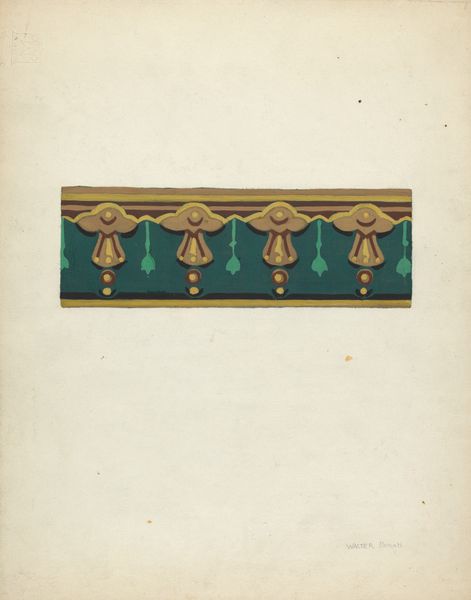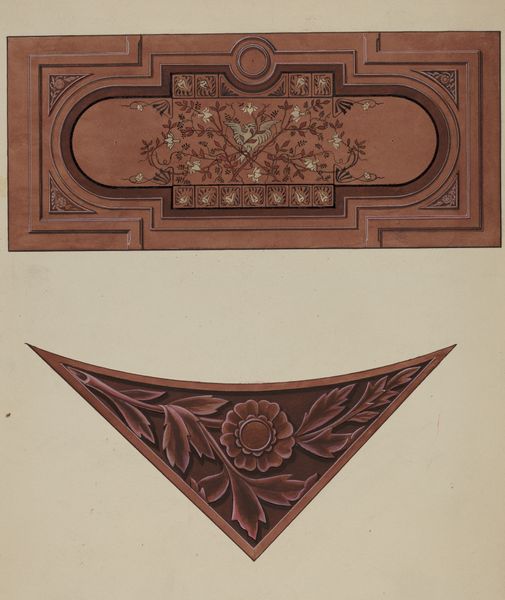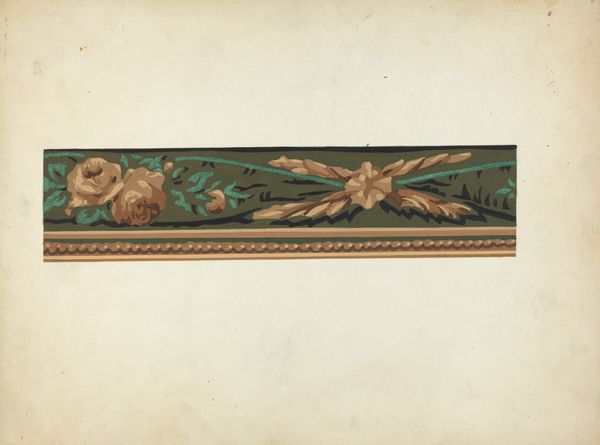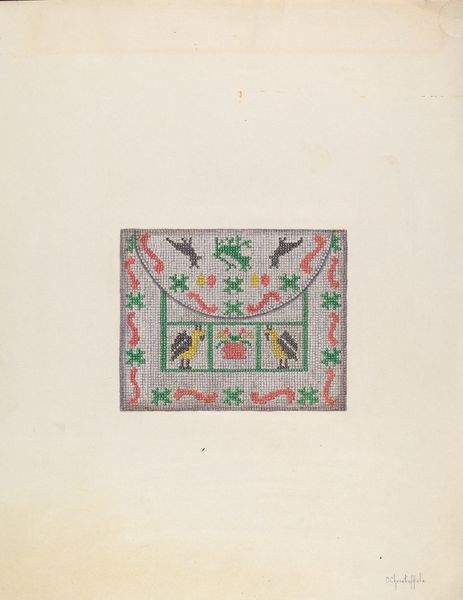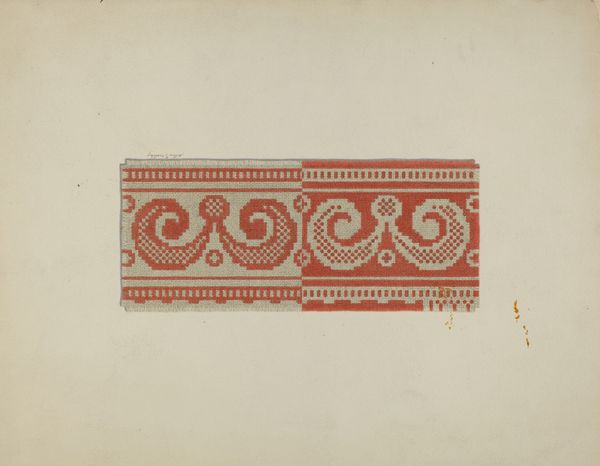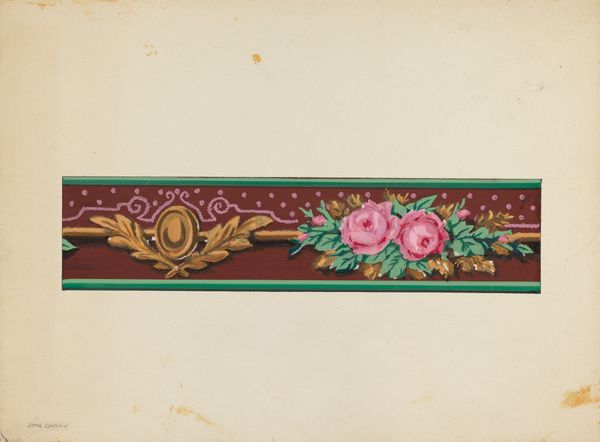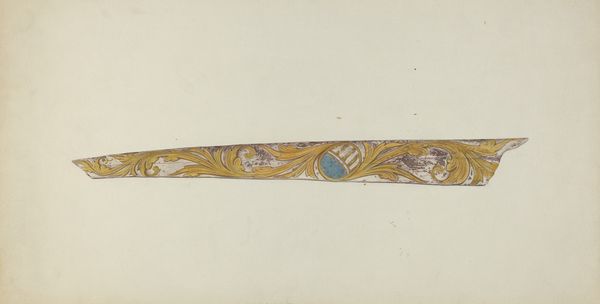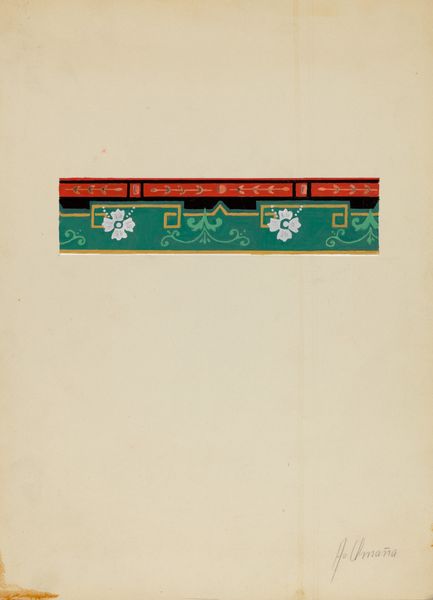
drawing, watercolor
#
drawing
#
water colours
#
watercolor
#
decorative-art
#
watercolor
Dimensions: overall: 32.5 x 24.7 cm (12 13/16 x 9 3/4 in.)
Copyright: National Gallery of Art: CC0 1.0
Editor: Wellington Blewett created these watercolor Decorative Panels around 1936. They feel very deliberate and ordered. What significance might these panels hold, particularly considering the period in which they were made? Curator: That's a very astute observation! The meticulous nature of decorative art in the 1930s often reflected a desire for order and beauty during a time of social and economic upheaval. Decorative arts had a specific role to play, offering accessibility and visual comfort during harsh financial realities, offering inexpensive art alternatives. These panels, meant for integration in architectural or furniture design, hint at the aspirations of the middle class during the depression era. Editor: Interesting! How do they interact with ideas about art during this era, if this can be considered art at all? Curator: Good question! You're making a valid point, one that many scholars continue to ask! There was then, as there is today, an apparent schism between design and "fine art". Art exhibitions began offering broader shows. So the socio-political element encouraged integration of “high” and “low” forms. The decorative arts could provide a canvas for expressing national identity or aspirations, becoming politicized through their function. It begs us to question if all art has a decorative role in society. Do you think these designs evoke any particular message or theme for the society it represents? Editor: I see what you mean! I think the panels' focus on natural forms and order, given the depression-era backdrop, reflects perhaps a desire for optimism and return to more simple lifestyles? I hadn't considered art could be integrated and act as a tool of social change, but it is very illuminating. Curator: Absolutely. Recognizing art's interplay with its sociopolitical setting can enhance your appreciation for even decorative panels like these. It gives these aesthetic elements a real weight and importance!
Comments
No comments
Be the first to comment and join the conversation on the ultimate creative platform.
